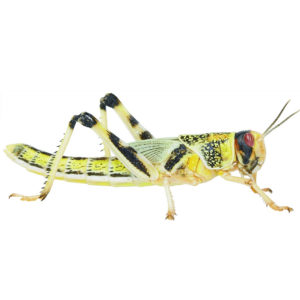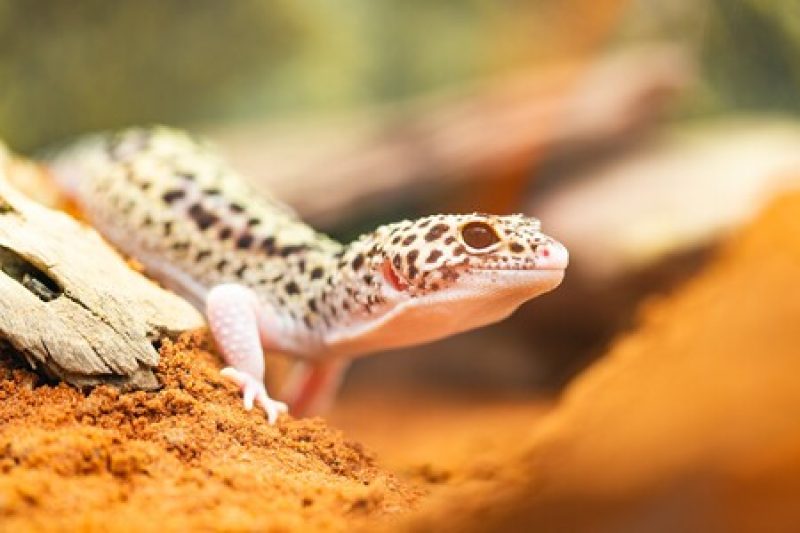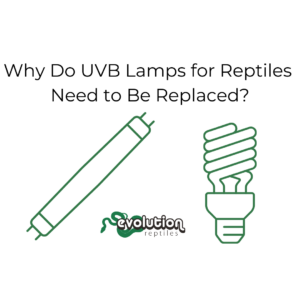
Live food Loyalty Program — Only at Our Kidlington Store!
Calling all reptile keepers and bug lovers! Stock up and earn rewards every time you purchase live foods in-store. 🦗 Get 50 Bonus Points When

Once we have decided on what species of reptile we want to keep, we have to assemble the equipment needed for it to live a long, happy and healthy life. As soon as we have the glass or wooden vivarium of the appropriate size we need to choose the correct vivarium lighting and heating for that particular species; we can cover heating in another article, but this one is a guide to the most commonly used vivarium UV light fitting and which animal and vivarium that they are suitable for.
There are an enormous number of different ways to provide UV to our pets, and not all of them will be suitable for all species. If the wrong strength of UV is supplied – or it is supplied in a way that the animal cannot use it – then that can cause a great deal of damage to your reptile pet and can cause serious injury or even death.
Luckily, there are simple solutions readily available for just about every species. This guide will hopefully help you to choose the equipment that suits you, your pet, and your pocket! Here’s a breakdown to help you navigate this article:
The short answer is yes!
Very, very few animals of any species go their entire lives without seeing any natural light at all. Those that have evolved to live in the depths of caves, totally underground or so far underwater that light cannot penetrate are the obvious exceptions to this. However, the species that we generally keep as pets are not from one of these groups and so they benefit from the provision of UV light.
Yes, many of these animals have been kept and even bred in the past without UV being used; however, it is much more effective to provide them with what their body needs and allow them to self regulate their exposure. It’s kinder, too!
If you would like to read more on why UV is so important to our pet reptiles, it’s worth checking out our articles on impaction, metabolic bone disease, and all the care sheets as they detail each animal’s requirements for UV.
It’s often said that nocturnal animals such as most geckos and many snakes have no need of UV, but the truth is that they will use UV in the wild. Geckos in particular are experts at ‘cryptic basking’, where they will expose just a part of the body to light – the end of the tail, a limb or the tip of the nose – and absorb UV through their thin skin. Some geckos sleep during the day in dappled sunlight, against tree trunks or hidden in leaves, and again will be receiving low levels of UV light which they use to fuel their body’s processes.
Reptiles are solar-powered, so it’s up to us to give them the light and heat that they need to thrive.
Before you rush to buy the biggest, strongest UV light on the market, stop and think for a minute. Consider the following:
There does seem to be a bewildering range of different UV lights on the market, so if you have thought about the above points, which one should you choose?
Metal halide lamps provide UVA, UVB, visible light and heat all in one bulb. However, they cannot be used with a thermostat and are very intense, so they should be chosen carefully for specific installations. They also require a specific ballast and holder, and cannot be just plugged into the mains.
The Mercury vapour is another all in one lamp, but this one can be used in a normal E27 bulb holder as the ballast is built into the bulb. (Their full name is self-ballasted mercury vapour.) These produce UVA, UVB, visible light and heat, but again cannot be connected to a thermostat. Not as intense as the metal halide, but still only suitable in a very small range of situations.
Available in different strengths, these have been the mainstay of the reptile and aquatic trades for decades. They need to be connected to a separate ballast, but generally, provide trouble-free operation for a reasonable period of time. Like all fluorescents, the output drops over time so they must be replaced every 9 to 12 months – this drop in output is not visible to the naked eye, so they must be replaced even if they seem to be working. T8 refers to the thickness of the tube rather than to its strength. All T8 tubes should be used with a reflector. Here’s a T8 UV light for forest-dwelling animals and one for desert-dwelling species.
A more modern version of the classic fluorescent tube, these will have an electronic rather than a magnetic ballast unit, which means smoother and flicker-free operation. T5 refers to the thickness of the tube. Several manufacturers now make complete units which contain ballast, bulb holder and tube all in one. These units can be fixed inside the vivarium or over a mesh top, and are excellent value for money. T5 tubes should still be replaced every 9 to 12 months, depending on brand. Click to view our range of T5 UV lights.
These are small fluorescent tubes that are twisted or bent to provide a fairly intense output over a small area. They are notoriously variable in quality, although that’s not such a problem with the more modern units. Most use a standard E27 fitting, and are very useful for providing UV for animals that only need a small amount of UV. Compact bulbs should be replaced every 9 to 12 months, just like the larger fluorescents. Here’s one compact UV bulb; there are other options on our Vivarium UV light category page.
In order to provide a UV gradient across the enclosure, it’s necessary to place your UV lights carefully when doing vivarium light fitting. What we are aiming for is to have the strongest level of UV in the warmest or basking area, dropping in a curve until there is a shaded area that receives no UV at all.
If using metal halide lights, then make sure that they are mounted high enough over the enclosure that they are not creating a ‘danger zone’ where your pet could be burned. These work very well over a densely planted enclosure where they provide an effective ‘sunbeam’ effect. Check the output with a UV meter and a digital thermometer, and adjust the height of the bulb accordingly.
Mercury vapour bulbs are usually used for tortoises, suspended over an open-topped enclosure or table. Raise or lower the bulb to obtain the necessary temperature, and be sure that the bulb is no closer than 30cm above the top of your pet’s shell. Also, make certain that your tortoise has adequate facilities to hide away from the light and heat.
Compact UV bulbs should be mounted high up and at one end of the vivarium, preferably on the same side as the warm end. In vertical vivariums with a hood, the heat bulb and UV are both mounted together, which provides a vertical UV and heat gradient.
T8 fluorescent tubes should be mounted on the ceiling only, not dangling down the back wall of the vivarium. Never mount them within the horizontal eye line of your pet, as this can cause stress and even blindness. Cover at least ⅔ to ¾ of the length of the vivarium with the tube, and always use a reflector.
T5 fluorescent tubes are much more efficient and need to cover ⅔ of the length of the vivarium. Mounting the all in one units is simple, as they are designed to be attached easily and quickly. Check that your pet cannot get too close to the tube if using the desert suitable strengths, and always provide shady retreats no matter which strength or size of tube you are using.
Every manufacturer publishes graphs and figures explaining the UV output of their bulbs on the packaging, so it’s a very useful guide to read before installation.
A general recommendation is 12 hours on, 12 hours off but this can be modified according to the season. Increasing the time the UV is on 14 or even 16 hours at the height of summer and dropping it down to as low as 8 hours during the winter can help your pet adjust its seasonal cycles. This can be really helpful for animals that benefit from a brumation period.
Take the time to learn where your reptile pet comes from in the wild. This will tell you an enormous amount about the amount and intensity of light that they would receive, and this can help you with bulb selection.
Make use of our experience! We are very happy to discuss the needs of yourself and your pet, and put our extensive product knowledge to good use in finding the UV light source that works best for your pet.
It’s incredibly important to provide your pet reptile with all the conditions it needs to thrive, and although there are cheaper alternatives they can have devastating long term consequences. A good quality UV light unit is usually cheaper than a vet’s bill.
This is one of those subjects that sounds complicated, but it really isn’t. The zone that your pet comes into tells you not only how much UV they will likely benefit from, but also the best ways to deliver it. We display Ferguson zones on all our vivaria in store and on our care sheets – it’s that important!
We can tell you the recommended replacement times, or you can usually find them on the manufacturer’s website. It can help to either make a note on the bulb itself when it was first installed or make a note on your calendar for when it needs replacing. And yes, even if it is still giving out visible light, it still needs to be replaced! Our eyes cannot pick up UV light, so unless you have a UV meter you should change bulbs at the recommended intervals, even if they still seem to be working.
If you have multiple vivaria or keep particularly delicate reptiles then it is worth investing in a dedicated UV meter. They are not cheap, but they can tell you exactly how much UV your bulbs are giving out. This way you only replace them when necessary, which doesn’t take long for the
unit to pay for itself! It’s also incredibly useful for checking UV availability within planted terraria, paludariums, or particularly large or small enclosures.
If you would like to find out more about our range of UV lights, vivariums and other reptile keeping equipment, please come in and visit us at our Oxfordshire store. If you can’t come in to visit us, then check out our website or click here to contact our in-house experts. For more information on the best practice for keeping your pet, then check out our care hub to look through our extensive range of caresheets – our blog has lots of interesting information too!

Calling all reptile keepers and bug lovers! Stock up and earn rewards every time you purchase live foods in-store. 🦗 Get 50 Bonus Points When

Why Do UVB Lamps for Reptiles Need to Be Replaced and How Often UVB lamps are essential for the health and well-being of reptiles, but

Why Reptiles Require UVB Light and How Their Bodies Use It Reptiles, unlike mammals, cannot synthesize vitamin D3 through their diet alone. Instead, they rely
Copyright 2021 Evolution Reptiles
All rights reserved.